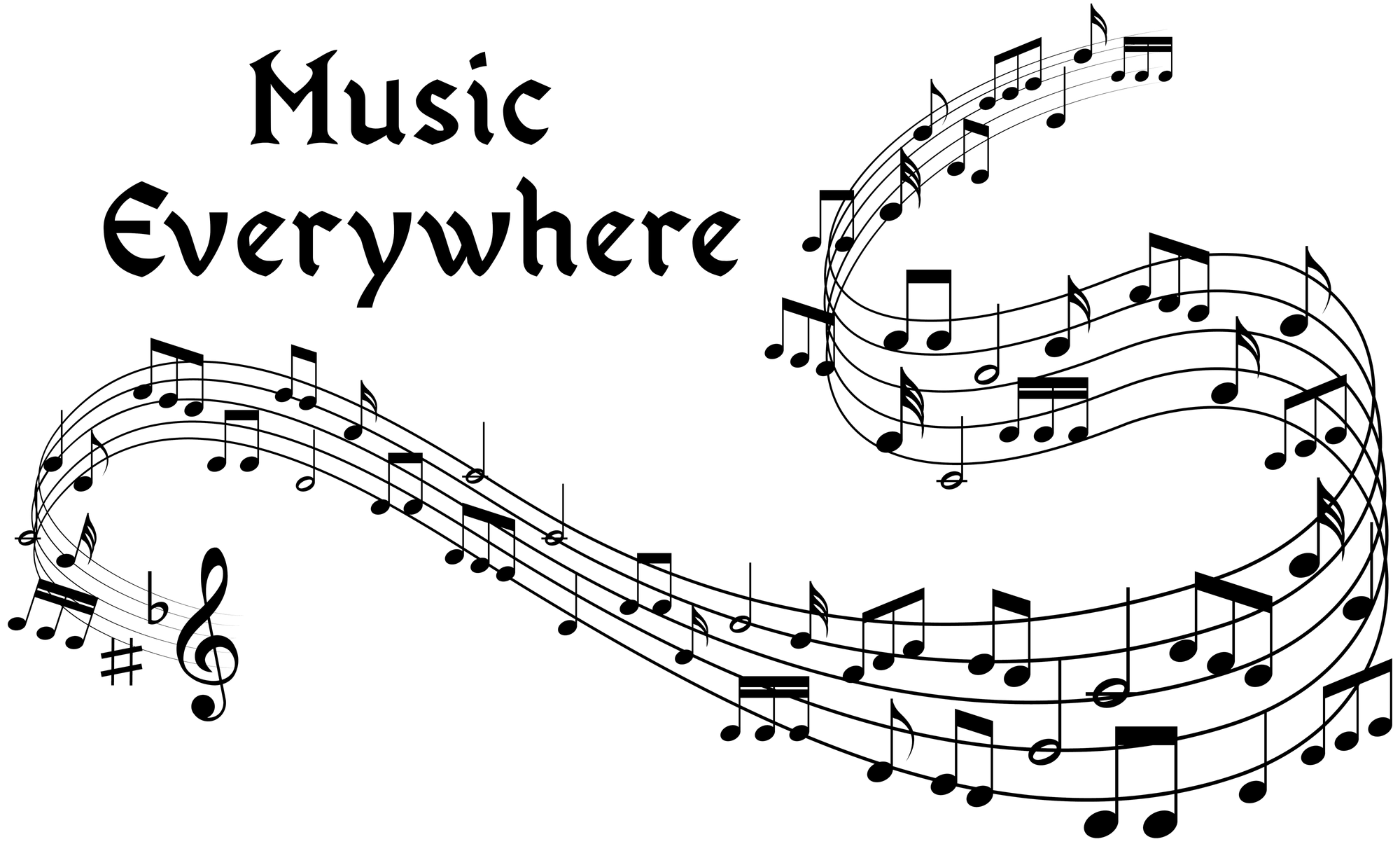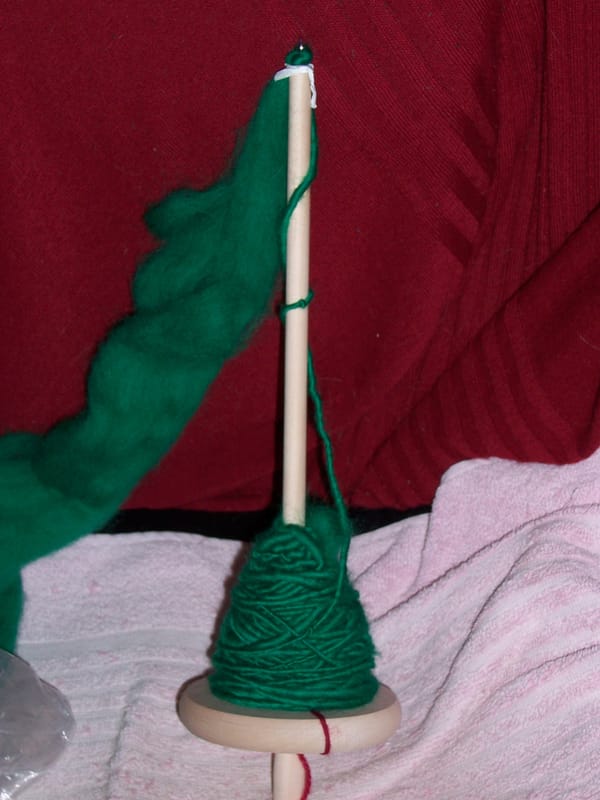Victorian inspiration
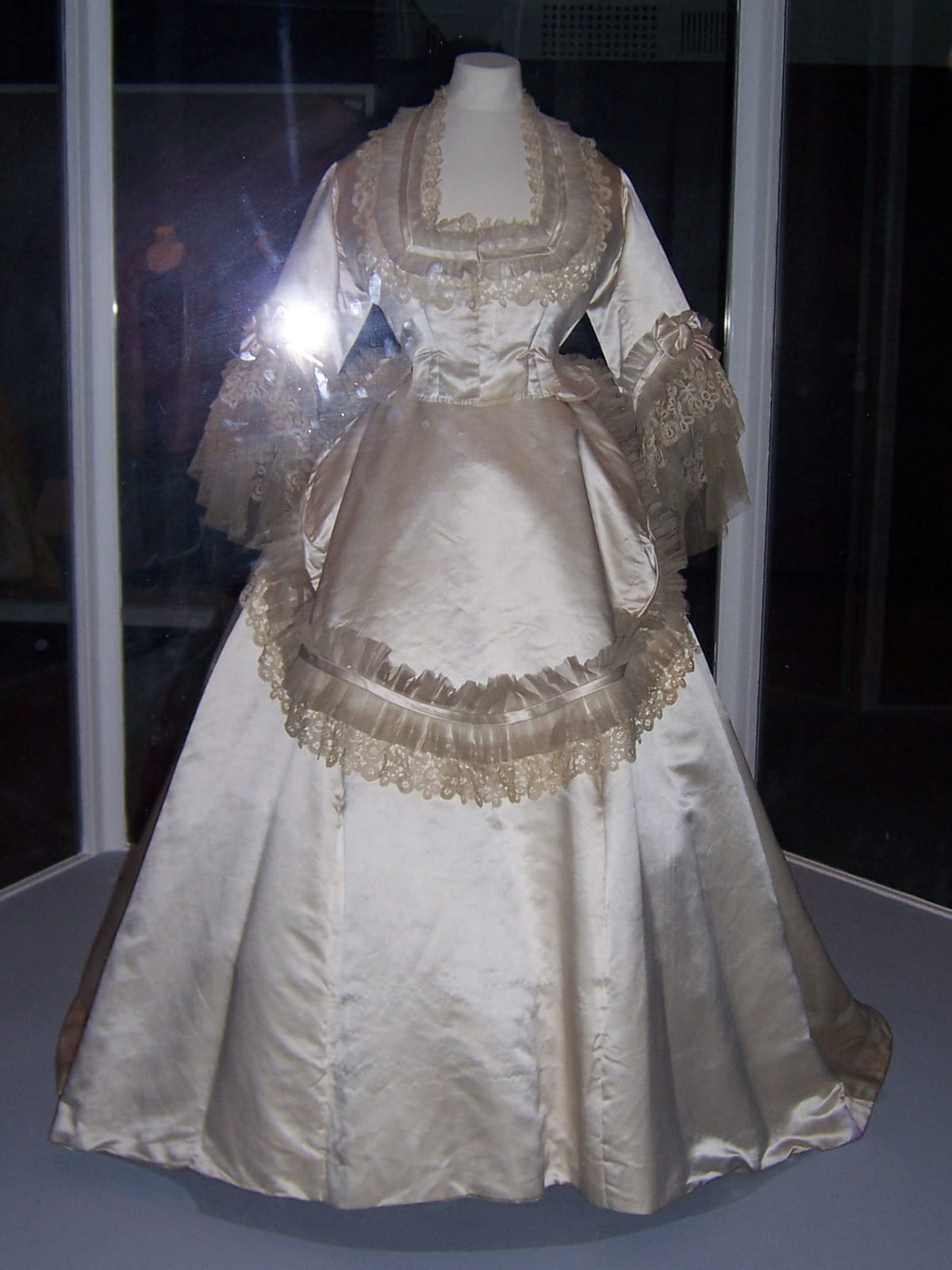
At the moment I have a lot of projects that aren't quite where I need them to be in order to post about them. The bead dish in the kitchen is still not quite dry (though we're getting there, and hopefully it will not only be fully dry but painted by the time I need it for the next necklace I make). Adelaide is still being finished; I gave her one coat of light oak stain yesterday and decided that wasn't enough, and she'd need another one to even her out properly. Then you've got the waxing on top of that, so she's not even warped up yet, let alone any actual weaving in progress. The netting... well, I had a brainwave and decided to turn the football bag into a hanging basket, since I have a number of friends who are keen gardeners; I will shortly show you how I'm doing the hanging straps. However, I do feel much the same way about hanging baskets as I do about cats, which is to say I'm not in favour of having just one. There should be at least two, to keep each other company. So someone, very probably the friend I have lunch with on Tuesdays, is going to get a nice little surprise gift. Oh, and of course I'm still working on Old Testament Name's jumper.
So today we're taking a virtual trip to the V&A to look at this rather interesting wedding dress. (I say a dress, but I think it is actually a bodice and skirt; however, I'm pretty sure it was intended to be perceived as a dress.) I'll say right now I don't like it, as a whole; but that's not the important thing. The important thing is that we're looking at a collection of ideas put together, and probably every single one of those ideas would look stunning in a different form. That's what inspiration is about. That said, let's have a look at the back now.

And now you immediately see the explanation for that rather weird curved trim going across the front of the skirt that kind of makes it look as if there's an apron. It's symmetry. This bustle is a huge feature, so the designer decided to echo it at the front. It doesn't work for me, but at least you can see where they were coming from. What isn't very obvious in this shot is the train, so let's have a look at that:

That really is quite some bustle, isn't it? You can't really tell from the flat back view. I'm not sure how one went about sitting down in a creation like this, but I think I'd have been tempted to fold it up my back and use it as a cushion. After all, the train is long enough that you're still not showing your ankles if you do.
Let's have a close-up of the trim:
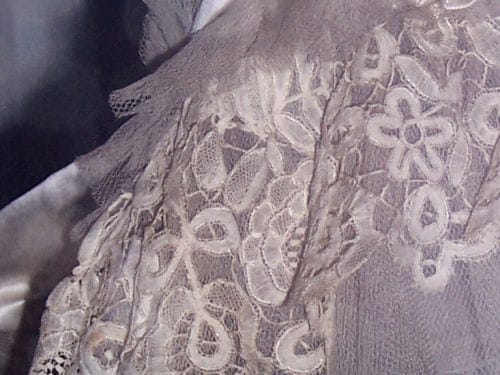
Unfortunately this photo isn't clear enough to identify the technique used for the lace with 100% accuracy; the dress was in a glass case and so I couldn't get close enough. It is certainly handmade needlelace. At first I was fairly sure it was tape lace with additional cording, but on closer inspection I'm not so certain. I think it may be primarily cutwork. The one thing that is quite clear, and can be seen from looking at the lace at bottom left of this photo, is that the lace and tulle are separate here. Some lace is made by embroidering on tulle, but this is not - it's a layer of its own. Whether it's cutwork or tape, though, there is quite a lot of additional cording, which is used not only for outlining but to strengthen and add interest to large areas between the individual design elements. Note in particular the zigzag of cord about halfway up the photo towards the right-hand side, just below and to the left of the five-petalled flower. Because of the tulle I can't see whether or not any smaller lace stitches have been worked around this zigzag, but it is so constructed that it will hold the lace together in that area even without.
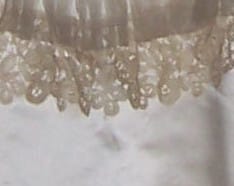
This is not very good either, and enlarging it doesn't help; but you can at least see here that the lace is not done on tulle. Above this lace, there is a strip of tulle which is gathered along the centre of its length (from the neatness, I would say there were at least two rows of gathers), and then a length of ribbon sewn over to hide the gathers and provide an attractive finish. While I don't think I'd want to use such a wide strip of tulle, this is definitely an idea I'd consider using; it would look very elegant in black, sewn round the hem of a long evening skirt. The photo doesn't permit examination of the construction, but if I were doing this I would first gather the tulle to the correct length, then sew it to the fabric close to the gathers, and then finally add the ribbon. I think this may have been done here (rather than stitching the ribbon to both the tulle and the fabric), because the edge of the ribbon does appear to stand a little way from the fabric to the right of the feature photo; but it is very difficult to tell. It could simply be the lighting.
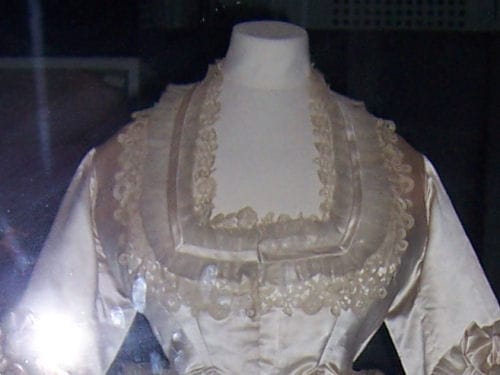
This has to be my least favourite kind of neckline; but it is very easy to trim. You just have to be able to mitre corners. All the lines are pretty much straight. The thing is, of course, they didn't have zips at the time; these days a dress like this would have a back zip as a matter of course. It's quite cinched in at the waist, so it wouldn't be possible to get it on over the head, even with this very low neckline, unless there was some kind of fastening. And, in fact, you can just see from the ribbon that there's a very well-concealed fastening at the front. I imagine it's either hooks and eyes or small buttons under a placket, probably the former; and, quite apart from considering the neckline from a fashion viewpoint, if you're trying to conceal a fastening it makes sense to have that fastening as short as possible, so it makes sense to have a low neck. It's very neatly and ingeniously done. (And if I'd been in the same position of the designer I'd have wanted to go for a V neckline instead, but, thinking about how that would work, I can see why they went for the square. The point of the V would have to be designed extremely accurately to avoid making the fastening obvious.)
And finally... nobody's really that shape! The waist is so tightly cinched that it was clearly designed to be worn over some pretty serious corsetry. I'm also doubtful about the shoulders. It's true that sloping shoulders were very much the fashion of the day, and if you look carefully (it's most obvious from the back) you can see that the shoulders on this dress are slightly dropped to emphasise that slope; but even so, I'm not totally convinced anyone's shoulders actually slope as much as it appears here. But perhaps they did in this case. The three-quarter back view shows an unusually rounded back and low bust, suggesting that it was fitted specifically to someone with a fairly non-standard figure, perhaps an older woman than you would normally expect to be getting married. After all, there's no law that says you have to be in your twenties or thirties. My great-uncle got married for the first time in his eighties, to a bride of similar vintage.
I'd definitely have liked to be able to get a little bit more "up close and personal" with this outfit, especially the lace; but I suppose they have to keep it in a glass case to avoid people handling it (and probably also to give it a controlled atmosphere and keep it dust-free). Anyway, maybe it'll spark off a few ideas... you never know.
